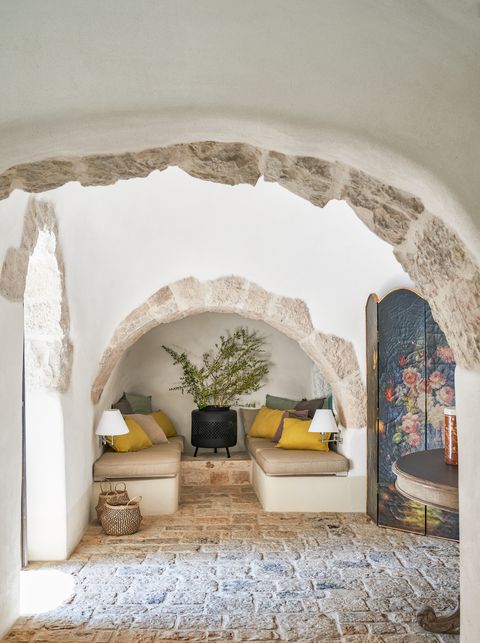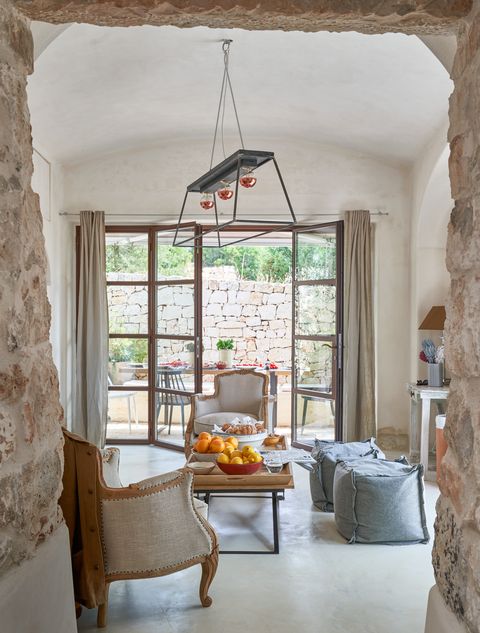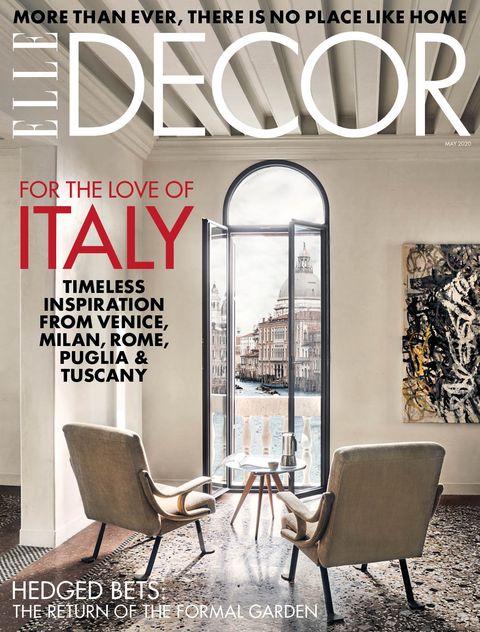See a Centuries-Old House in Puglia Transformed
As part of her job, ’s creative director, Lucia Silvestri, spends a lot of time searching for exceptional gemstones. But the self-professed gem hunter, known for her glamorous style, sun-kissed skin, and layers of gold jewelry, doesn’t solely focus on a jewel’s color and cut: She’s also seeking positive energy. “I look for stones that speak to me,” she says. When she’s holding a special gem, she can feel its energy. And when she first visited Italy’s Puglia region six years ago, she immediately experienced those same positive vibes.
“I felt a connectedness when I came to Puglia,” says Silvestri, who recently celebrated her 40th year at the legendary Italian jewelry house. “I’m instantly relaxed, and I feel at home here.”
Located in the heel of Italy’s boot, five hours by car from Silvestri’s home in Rome, the region feels worlds apart from city life. She originally visited the rustic countryside to stay at a friend’s trullo, one of the historic limestone homes topped with a conical roof that are unique to Puglia and appear to be straight out of a fairy tale. These remarkable dwellings date as far back as the 14th century, and thousands of trulli (the plural for trullo) can be found in the town of Alberobello, a unesco World Heritage site in Puglia. Silvestri was immediately captivated by the dwellings and went in search of her own trullo. But she didn’t want just any trullo—she wanted to find one in the isolated countryside, far away from the crowds.
After months of searching, Silvestri found her dream home. It was perched on a hilltop with panoramic views of the whitewashed villages, rolling hills, and olive farms below. Built in the 1600s, the dilapidated stone trullo had been home to a 99-year-old woman, who was raised in the tiny house with her nine brothers and sisters and whose family had owned it for several generations. It’s a formidable task to restore a crumbling trullo because they are protected by strict rules enforced by the Italian government, but the house was completed this spring after a five-year renovation.
Silvestri worked closely with local architect and interior designer Bepi Povia to restore the home’s authentic structure, which meant using limestone, the original material, to rebuild the conical roof in the traditional style without mortar. Povia created a sense of openness in the 900-square-foot home by installing generous windows and sliding glass doors in the bedroom and the living room, both of which open onto the courtyard. Silvestri and her architect also expanded the house by adding a second bedroom and bathroom, and they built a small swimming pool that blends into the landscape because they didn’t want to draw any attention away from the property’s untamed beauty. “It’s magical here in the evening,” Silvestri says. “I like to have an aperitif in the courtyard and gaze at the star-filled sky and the lights in the valley below. I sleep very well here. No noise, just a few birds.”
The whitewashed house is designed in an earthy neutral palette of beige, light brown, white, green, and touches of dark brown, and the cement floors have a white powder finish. Still, Silvestri is adding pops of color here and there, noting, “Every time I come, I bring something colorful—a vase, a pillow, or a painting.” Furnishing the house gave her the opportunity to explore the nearby villages and meet the local craftspeople. The rustic wood furniture is a mix of antique pieces and items commissioned from nearby furniture makers, and the pottery was made in the neighboring village of Grottaglie, which has been producing ceramics for centuries. “You can’t imagine how much there is to discover in this region,” she says. Some of her favorite weekend spots are the town of Martina Franca, for its Baroque architecture, and Ostuni, known as the White City, for its wonderful antiques market. Of course, Silvestri also loves Puglia’s miles of white-sand beaches.
The simplicity of the humble trullo reflects the calming spirit that Silvestri discovered when she first arrived in Puglia six years ago. Given what her country has gone through in recent months, that sense of serenity feels more precious to her than ever. “While I turn to Puglia for a comforting escape during these hard times,” Silvestri says, “my heart is with all of Italy and the rest of the world during this trying year.”
This story originally appeared in the May 2020 issue of ELLE Decor. SUBSCRIBE




